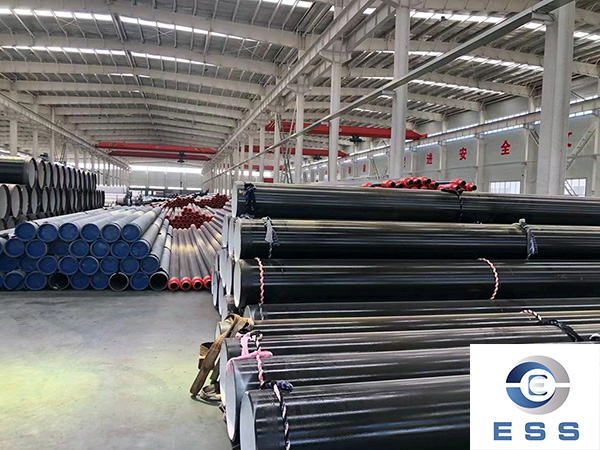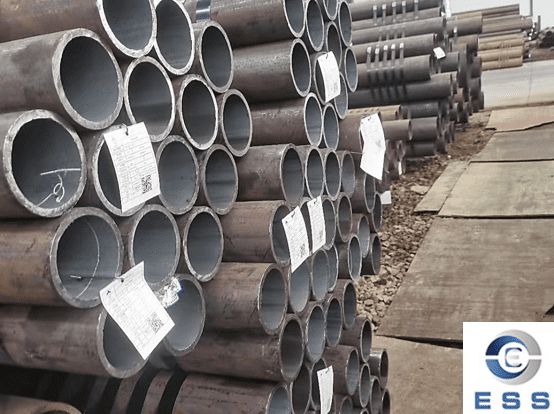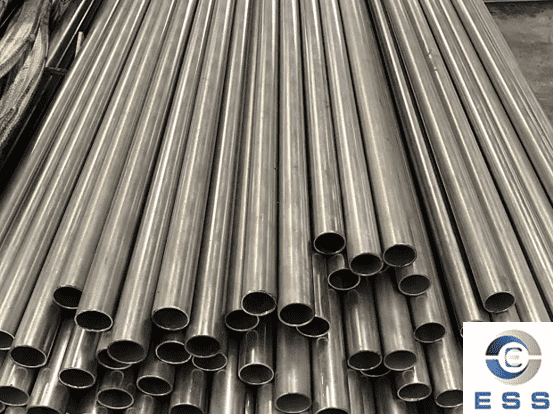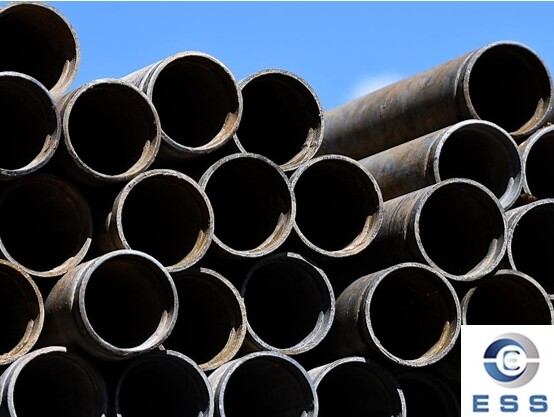How seamless pipe hs code can streamline your import/export process
1.Introduction
1.1 Overview of Import/Export Process:
The import/export process is a fundamental aspect of international trade, enabling businesses to expand their reach and access a global marketplace. However, navigating the complexities of this process involves complying with a multitude of regulations and ensuring efficient customs procedures. seamless pipe hs codes play a vital role in simplifying and optimizing these operations.

1.2 Role of HS Codes:
HS codes are internationally recognized numerical codes assigned to products to classify them for customs, statistical, and tariff purposes. These codes are utilized by customs authorities, logistics providers, and traders worldwide. A comprehensive understanding of HS codes is crucial for efficient import/export management.
1.3 Importance of seamless pipe hs codes:
seamless pipe hs codes refer to a streamlined and accurate classification system that eliminates errors, reduces delays, and enhances compliance in the import/export process. This article explores the significance of seamless pipe hs codes and highlights the benefits they offer to businesses engaged in international trade.
2.Understanding HS Codes
2.1 Definition and Structure of HS Codes:
The Harmonized System is a globally standardized system comprising six-digit codes that are further subdivided into more detailed categories. Each code represents a specific product or group of products. The structure of HS codes allows for uniformity and consistency in product classification across countries.
2.2 HS Code Classification:
HS codes classify products based on their nature, composition, function, and other attributes. The classification process involves identifying the appropriate code that corresponds to a product's characteristics, enabling accurate documentation and facilitating customs procedures.
2.3 Purpose of HS Codes:
HS codes serve various purposes, including customs valuation, tariff determination, trade statistics compilation, and regulatory compliance. They enable governments to track international trade flows, protect domestic industries, and enforce trade agreements.
3.Challenges in Import/Export Process
3.1 Complexities and Variances in HS Codes:
The import/export process faces challenges due to the complexities and variances associated with HS codes. Different countries may have unique interpretations and modifications to the codes, leading to inconsistencies and potential errors in product classification.
3.2 Compliance and Customs Clearance Issues:
Incorrect or incomplete HS code assignment can result in compliance issues and customs clearance delays. Non-compliance can lead to penalties, shipment holds, and additional costs. Ensuring accurate and seamless pipe hs code implementation mitigates these risks.
3.3 Time and Cost Implications:
Inefficient HS code classification processes consume valuable time and resources. Manual classification methods are prone to errors, requiring additional effort for rectification. Implementing seamless pipe hs codes minimizes delays and optimizes resource allocation.
4.The Benefits of seamless pipe hs codes
4.1 Enhanced Accuracy and Efficiency:
seamless pipe hs codes improve accuracy in product classification, reducing the likelihood of errors and misinterpretations. Automated systems and data validation techniques contribute to increased efficiency, enabling faster customs clearance and smoother supply chain operations.
4.2 Improved Compliance and Risk Mitigation:
By implementing seamless pipe hs codes, businesses ensure compliance with regulations and minimize the risk of penalties or shipment holds. Accurate classification also helps in identifying potential risks, such as restricted goods or licensing requirements, and ensures adherence to international trade agreements.
4.3 Simplified Customs Procedures:
seamless pipe hs codes simplify customs procedures by providing accurate product information. This simplification leads to quicker inspections, reduced customs documentation, and smoother communication between stakeholders involved in the import/export process.
4.4 Facilitated Market Analysis and Research:
Accurate HS codes provide valuable data for market analysis, enabling businesses to identify emerging trends, evaluate market opportunities, and conduct competitive research. This information supports strategic decision-making and enhances market intelligence.
5.Implementing seamless pipe hs codes
5.1 Building a Comprehensive Product Database:
Creating a comprehensive product database that aligns with HS codes is essential for seamless implementation. Businesses should gather detailed product information, including specifications, components, and attributes, and map them to the appropriate HS codes.
5.2 Automation and Technology Solutions:
Leveraging automation and technology solutions streamlines the HS code assignment process. Advanced software tools and artificial intelligence-based algorithms can analyze product descriptions and attributes to suggest accurate HS codes, reducing manual effort and increasing efficiency.
5.3 Collaboration with Industry Experts:
Collaborating with industry experts, such as customs brokers, trade consultants, or logistics providers, can provide valuable insights and guidance on seamless pipe hs code implementation. Their expertise ensures compliance with regulations and best practices in product classification.
5.4 Training and Education for Personnel:
Training employees involved in the import/export process on HS code classification principles and updates is crucial. Regular education programs and knowledge-sharing initiatives empower personnel to make accurate decisions and contribute to the seamless implementation of HS codes.
6.Case Studies: Successful seamless pipe hs code Implementation
6.1 Company A: Optimizing Product Classification:
Company A, an electronics manufacturer, implemented a robust product classification system that mapped their product attributes to accurate HS codes. This optimization significantly reduced customs clearance delays and improved compliance.
6.2 Company B: Automating HS Code Assignment:
Company B, a global retailer, adopted an automated HS code assignment system. By leveraging machine learning algorithms, they streamlined the classification process, leading to faster customs clearance and minimized errors.
6.3 Company C: Utilizing Data Analytics for HS Code Validation:
Company C, a logistics provider, implemented data analytics tools to validate HS codes assigned by their clients. This proactive approach reduced compliance risks and improved accuracy in product classification.
7.Best Practices for seamless pipe hs code Implementation
7.1 Ensure Data Accuracy and Consistency:
Maintaining accurate and consistent product data is critical for seamless pipe hs code implementation. Regular data audits, validation checks, and data governance practices ensure data integrity throughout the import/export process.
7.2 Regular Updates and Maintenance:
HS codes undergo periodic updates, revisions, and amendments. Businesses should stay updated with changes and actively maintain their product databases to reflect the latest code versions. Collaborating with industry associations and customs authorities aids in staying informed about code modifications.
7.3 Engage in Cross-Functional Collaboration:
seamless pipe hs code implementation requires cross-functional collaboration within an organization. Engaging stakeholders from departments such as procurement, sales, logistics, and compliance ensures a comprehensive understanding of product attributes and facilitates accurate code assignment.
7.4 Stay Abreast of Regulatory Changes:
Regulatory changes can impact HS code classification. Businesses must stay informed about changes in trade agreements, tariff rates, and import/export regulations to ensure compliance and adjust HS code assignments accordingly.
8.Future Trends and Developments
8.1 Artificial Intelligence and Machine Learning in HS Code Classification:
Advancements in artificial intelligence and machine learning technologies are transforming HS code classification processes. AI algorithms can analyze product descriptions, images, and specifications to suggest accurate codes, increasing efficiency and accuracy.
8.2 Integration of Blockchain Technology:
Blockchain technology offers potential benefits in HS code management, including secure data sharing, traceability, and enhanced transparency. Integration of blockchain can reduce data discrepancies and enhance trust in the import/export process.
8.3 Standardization Initiatives:
Efforts towards standardizing HS code interpretation and implementation across countries are gaining momentum. International organizations and trade associations are working to harmonize classification practices, which will contribute to the seamless exchange of goods across borders.
9.Conclusion
9.1 Recap of Key Points:
seamless pipe hs codes play a vital role in streamlining the import/export process. By accurately classifying products, businesses can improve compliance, enhance efficiency, and mitigate risks associated with customs procedures.
9.2 The Value of seamless pipe hs codes:
Implementing seamless pipe hs codes offers benefits such as enhanced accuracy, improved compliance, simplified customs procedures, and facilitated market analysis. It optimizes the import/export process, leading to smoother operations and increased competitiveness in the global marketplace.
9.3 Embracing a Streamlined Import/Export Process:
Businesses engaged in international trade should prioritize seamless pipe hs code implementation. By building comprehensive product databases, leveraging technology solutions, collaborating with experts, and staying updated with regulatory changes, organizations can streamline their import/export operations and maximize their success in the global trade landscape.













 Eastern Steel Manufacturing Co.,Ltd not only improve product production and sales services, but also provide additional value-added services. As long as you need, we can complete your specific needs together.
Eastern Steel Manufacturing Co.,Ltd not only improve product production and sales services, but also provide additional value-added services. As long as you need, we can complete your specific needs together.










